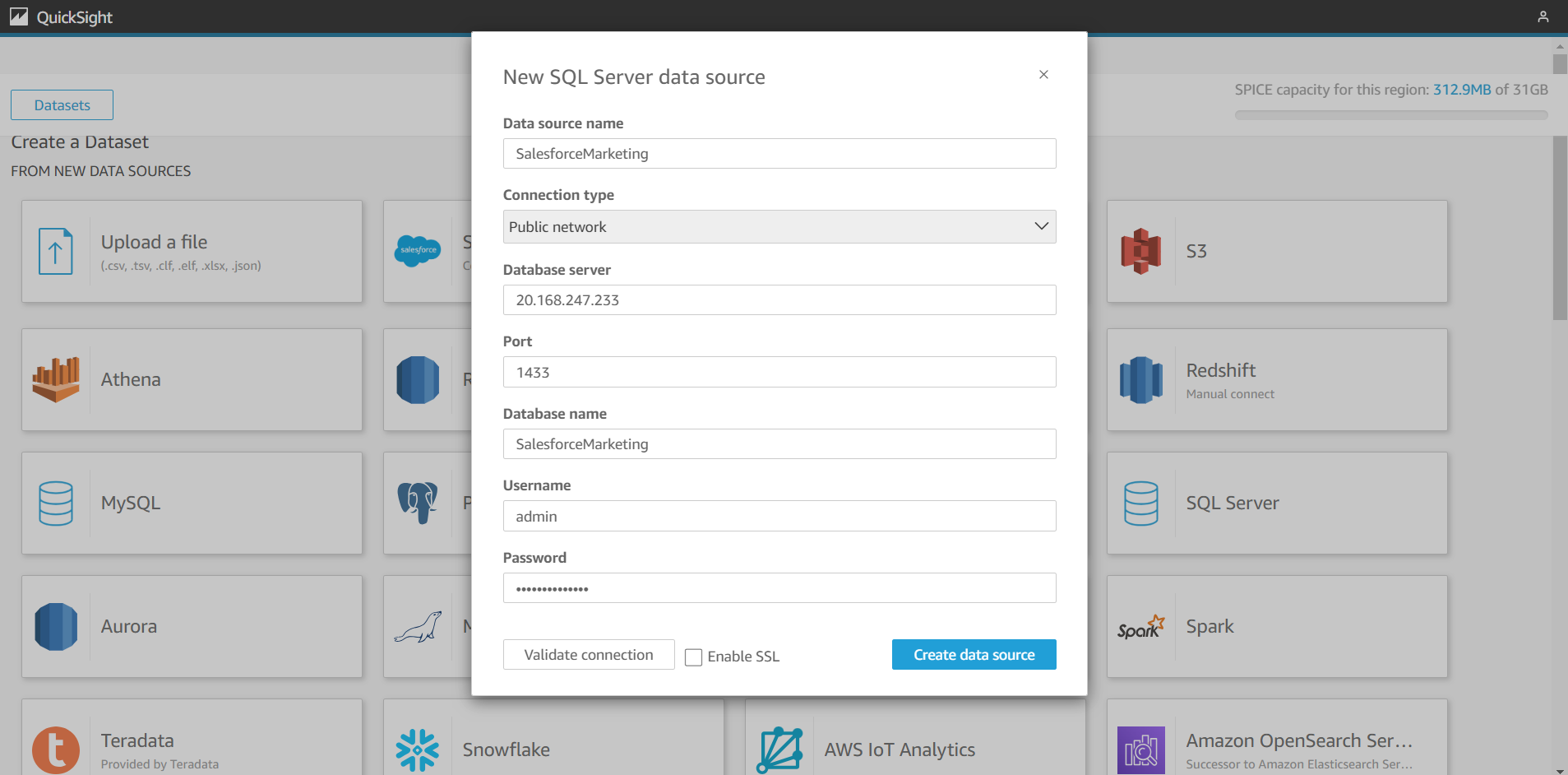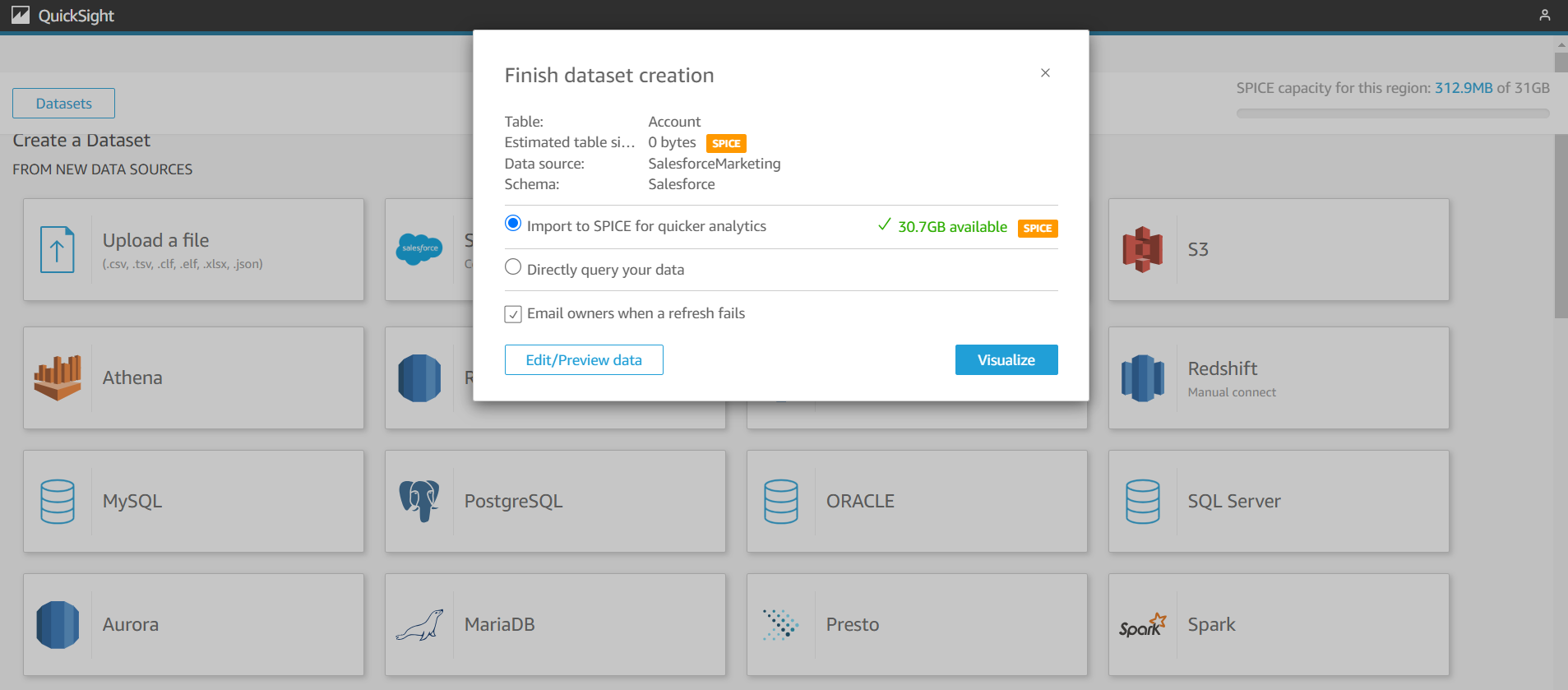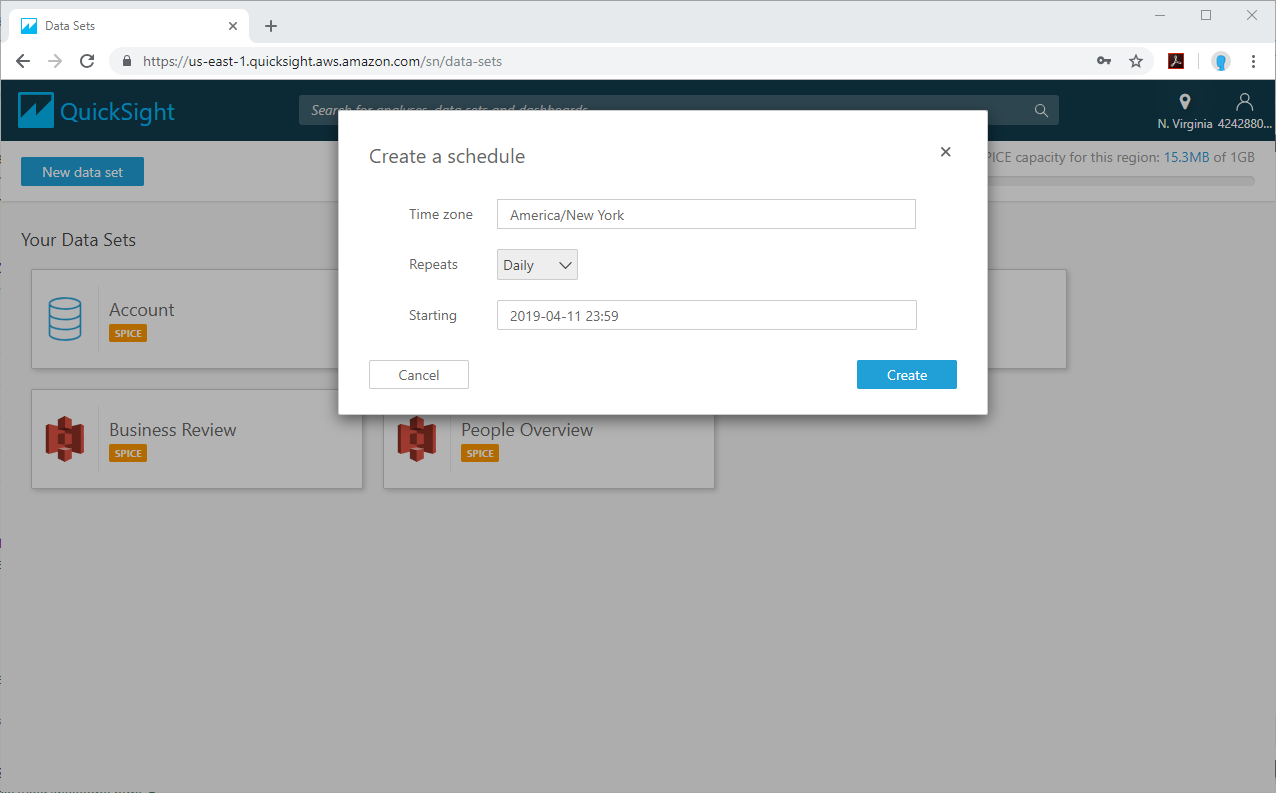Discover how a bimodal integration strategy can address the major data management challenges facing your organization today.
Get the Report →Build Interactive Dashboards from SQL Analysis Services Data in Amazon QuickSight
Create a virtual SQL Server database for SQL Analysis Services data in CData Connect Server and import SQL Analysis Services data into Amazon QuickSight SPICE to build interactive dashboards.
Amazon QuickSight allows users to build interactive dashboards in the cloud. When paired with CData Connect Server, you get direct access to SQL Analysis Services data for visualizations, dashboards, and more. This article shows how to create a virtual database for SQL Analysis Services in Connect Server and build dashboards in Amazon QuickSight with access to SQL Analysis Services data.
CData Connect Server provides a pure SQL Server interface for SQL Analysis Services, allowing you to easily build reports from live SQL Analysis Services data in Quicksight — without replicating the data to a natively supported database. As you build visualizations, Quicksight generates SQL queries to gather data. Using optimized data processing out of the box, CData Connect Server pushes all supported SQL operations (filters, JOINs, etc) directly to SQL Analysis Services, leveraging server-side processing to quickly return the requested SQL Analysis Services data.
Create a Virtual SQL Server Database for SQL Analysis Services Data
CData Connect Server uses a straightforward, point-and-click interface to connect to data sources and generate APIs.
-
Login to Connect Server and click Connections.
![Adding a connection]()
- Select "SQL Analysis Services" from Available Data Sources.
-
Enter the necessary authentication properties to connect to SQL Analysis Services.
To connect, provide authentication and set the Url property to a valid SQL Server Analysis Services endpoint. You can connect to SQL Server Analysis Services instances hosted over HTTP with XMLA access. See the Microsoft documentation to configure HTTP access to SQL Server Analysis Services.
To secure connections and authenticate, set the corresponding connection properties, below. The data provider supports the major authentication schemes, including HTTP and Windows, as well as SSL/TLS.
-
HTTP Authentication
Set AuthScheme to "Basic" or "Digest" and set User and Password. Specify other authentication values in CustomHeaders.
-
Windows (NTLM)
Set the Windows User and Password and set AuthScheme to "NTLM".
-
Kerberos and Kerberos Delegation
To authenticate with Kerberos, set AuthScheme to NEGOTIATE. To use Kerberos delegation, set AuthScheme to KERBEROSDELEGATION. If needed, provide the User, Password, and KerberosSPN. By default, the data provider attempts to communicate with the SPN at the specified Url.
-
SSL/TLS:
By default, the data provider attempts to negotiate SSL/TLS by checking the server's certificate against the system's trusted certificate store. To specify another certificate, see the SSLServerCert property for the available formats.
You can then access any cube as a relational table: When you connect the data provider retrieves SSAS metadata and dynamically updates the table schemas. Instead of retrieving metadata every connection, you can set the CacheLocation property to automatically cache to a simple file-based store.
See the Getting Started section of the CData documentation, under Retrieving Analysis Services Data, to execute SQL-92 queries to the cubes.
![Configuring a connection (SQL Server is shown).]()
-
HTTP Authentication
- Click Save Changes
- Click Privileges -> Add and add the new user (or an existing user) with the appropriate permissions.
With the virtual database created, you are ready to connect to SQL Analysis Services data from Quicksight.
Import SQL Analysis Services Data into SPICE and Create Interactive Dashboards
The steps below outline creating a new data set based on the virtual SQL Analysis Services database in Connect Server, importing the dataset into SPICE, and building a simple visualization from the data.
- Log into Amazon QuickSight and on the left panel click "Datasets"
- Click "New dataset," select SQL Server as the data source, configure the connection to your Connect Server instance,
and click "Create data source"
![Connecting to Connect Server as a QuickSight data set.]()
- Select a table to visualize (or submit a custom SQL query for your data) and click Select.
![Selecting a Table to visualize.]()
- Select "Import to SPICE for quicker analytics" and click "Visualize."
![Importing data to SPICE for quicker analytics.]()
- Select fields to visualize as well as a visual type.
![Visualizing data in QuickSight via Connect Server (SQL Server is shown).]()
Schedule Refreshes for SPICE Data Sets
QuickSight users can schedule refreshes for data sets that are imported into SPICE, ensuring that data being analyzed is only as old as the most recent refresh.
- Navigate to the QuickSight home page.
- Click "Manage data."
- Select the data set you wish to refresh.
- Click "Schedule refresh."
- Click Create, configure the refresh settings (time zone, repeat frequency, and starting datetime), and click Create.
![Scheduling a refreshing of the data imported into SPICE.]()
SQL Access to SQL Analysis Services Data from Applications
At this point, you have a direct connection to SQL Analysis Services data from your Amazon QuickSight dashboard. You can create new visualizations, build interactive dashboards, and more. For more information on gaining SQL access to data from more than 250 SaaS, Big Data, and NoSQL sources from applications like Amazon QuickSight, refer to our Connect Server page.













